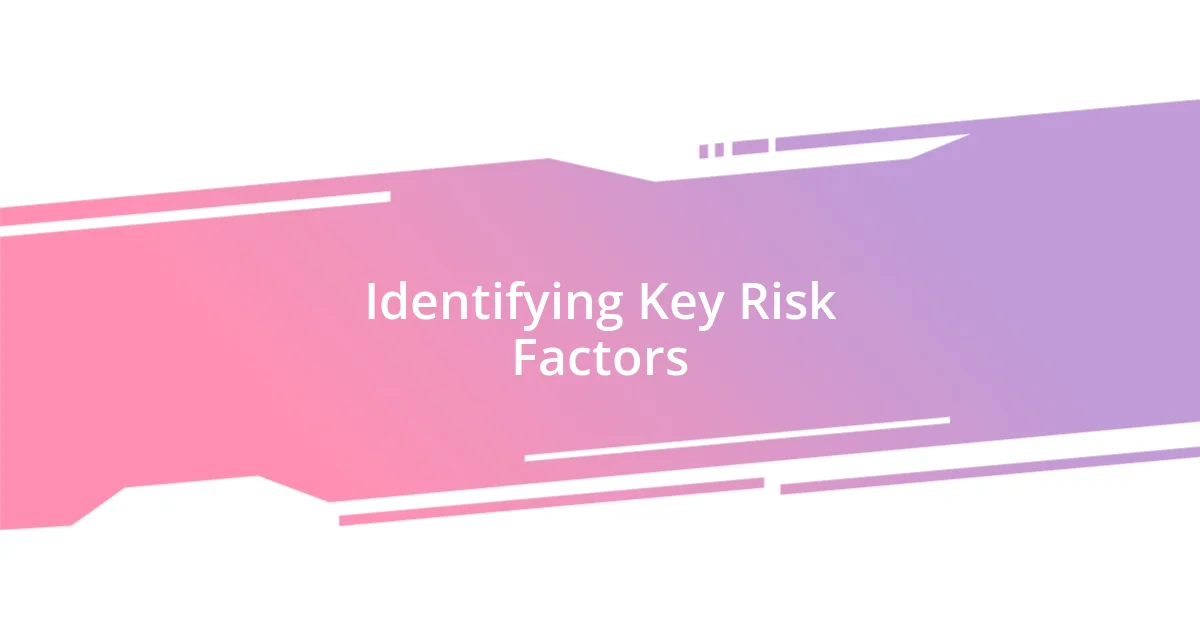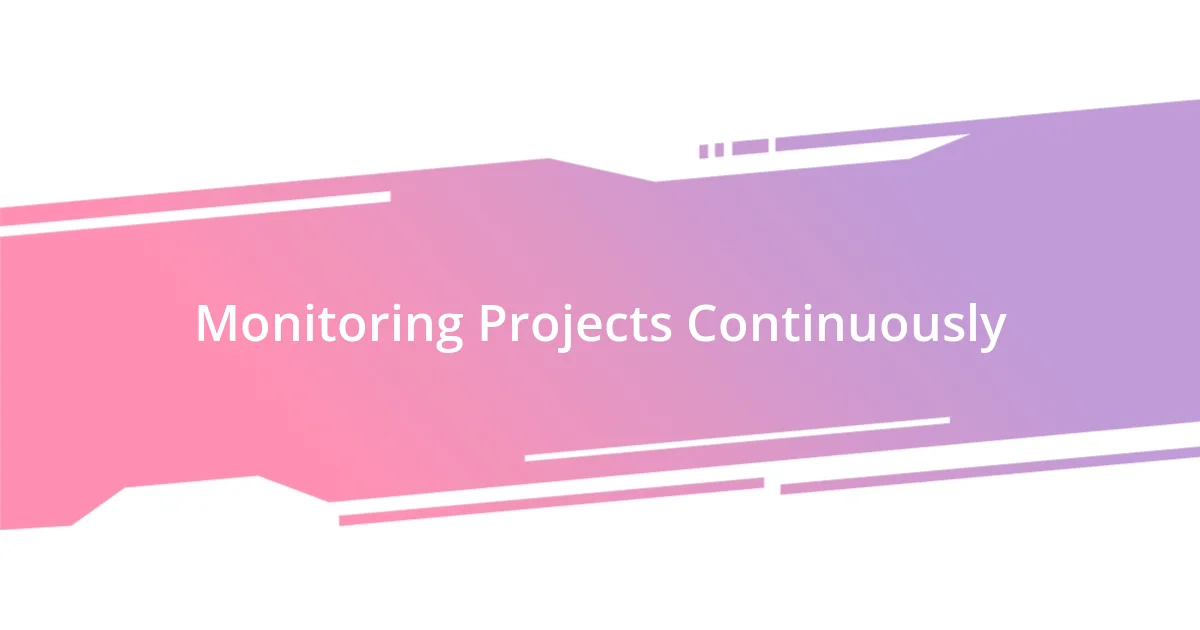Key takeaways:
- Recognize and mitigate risks such as scams, market volatility, regulatory uncertainty, and team credibility before investing in ICOs.
- Conduct thorough research by analyzing whitepapers, community engagement, and the team’s past work, while ensuring regulatory compliance.
- Continuously monitor investments and reflect on outcomes to improve decision-making and adapt strategies based on lessons learned.

Understanding ICO Investment Risks
Diving into the world of Initial Coin Offerings (ICOs) can be thrilling, but it’s essential to recognize the risks involved. I remember my first ICO investment feeling a mix of excitement and trepidation as I scanned countless whitepapers. It’s a bit like jumping on a roller coaster—there’s adrenaline, but also the sobering realization that the ride could go upside down at any moment.
One of the biggest risks I faced was the potential for outright scams. Have you ever thought about what it feels like to invest in a project only to discover later that it was a façade? I certainly have. Understanding that the anonymity often associated with ICOs can lead to projects that lack accountability made me more cautious. I learned to scrutinize the team behind each offering, looking for credible backgrounds and a history of successful projects.
Market volatility is another challenge that can’t be ignored. I’ve watched prices soar and plummet within days, which left me questioning not only my investment choices but my emotional resilience. It prompted me to ask: How can I prepare for the unforeseen swings in investor sentiment? Engaging with community forums and discussing market trends became my solace, illustrating the importance of staying connected and informed even during turbulent times.

Identifying Key Risk Factors
Identifying the key risk factors in ICO investing isn’t just a task; it’s a journey of discovery. One moment, I was captivated by a flashy marketing campaign, and the next, I was hit with the realization that certain projects lacked solid technological foundations. It’s crucial to assess the project’s underlying technology and its feasibility. If the tech isn’t robust or there’s no clear use case, I’ve learned that it may be a red flag.
In addition, I found that regulatory uncertainty can cast a long shadow over ICOs. I recall the uneasy feeling when legislation shifted, leaving both investors and projects scrambling. Understanding how the legal landscape affects an ICO can make or break your investment. I suggest keeping an eye on the regulatory developments in your jurisdiction because they can directly impact your investments’ value and stability.
Lastly, team credibility is a factor that I can’t emphasize enough. I’ve come across several ICOs with flashy websites but minimal information about the people behind them. Connecting with the team’s previous work and their reputation in the crypto community often helped me gauge their reliability. I realized that a strong team with a proven track record can significantly increase the chances of a project’s success.
| Risk Factor | Description |
|---|---|
| Scams | Anonymity can lead to lack of accountability; always research the team’s credibility. |
| Market Volatility | Prices can fluctuate greatly; staying informed through community engagement can help. |
| Regulatory Uncertainty | Legislation can change unexpectedly; monitor developments that impact liquidity and legality. |
| Team Credibility | A strong team can indicate chances of success; investigate their backgrounds and past projects. |

Conducting Thorough Research
Conducting thorough research is a fundamental step in mitigating risks when investing in ICOs. I remember spending long nights comparing different projects, trying to decipher their whitepapers, and it wasn’t just about the numbers or technology; it was about the story behind each project. Only by digging deeper did I uncover how a project’s vision matched my own investment philosophy. Exploring community discussions on platforms like Telegram and Reddit gave me valuable perspectives, often revealing insights I wouldn’t find in official documents.
Here’s what I learned to focus on during my research process:
-
Whitepapers: They should be clear, well-organized, and detail the project’s purpose, technology, and roadmap.
-
Community Engagement: Active participation in forums can reveal the project’s reputation and the community’s sentiment.
-
Previous Work: Investigate the team’s prior projects; successful ventures in the past usually indicate credibility.
-
Technical Feasibility: Understanding the underlying tech helped me assess whether it was practical and innovative.
-
Regulatory Compliance: I always checked if the ICO had taken steps towards meeting legal requirements. This adds a layer of security for my investment.
Taking the time to thoroughly investigate these aspects turned out to be a game changer for me. I once made a hasty decision based on flashy marketing and paid dearly for it—I lost not only my investment but also my confidence. That experience taught me a lesson I carry to this day: a well-informed decision is the best safety net against the unpredictable nature of ICOs.

Setting Investment Limits
Setting investment limits is a crucial practice that I wholeheartedly endorse when diving into the world of ICOs. You see, it’s all too easy to get swept up in the excitement of a potential high return, but I learned the hard way that this can lead to reckless decisions. Establishing a clear limit on how much I was willing to invest not only protected my finances but also provided me with peace of mind. It allowed me to approach each opportunity with a structured mindset, rather than being entranced by the glitter of bold promises.
I remember one particular ICO that captured my attention—the marketing was brilliant, and the potential seemed endless. As I sat down to set my investment limit, I asked myself: what’s the worst that could happen if this falls through? That question illuminated the path for me. I decided to invest only what I could afford to lose without jeopardizing my financial stability. This practice has become a personal mantra, guiding my decisions and making me feel more empowered in my investments.
Additionally, I found that regularly revisiting these limits is essential. Market conditions change, and so do my financial goals. I often sit down to review my investment strategy, making adjustments as necessary. This ongoing evaluation helps me stay grounded and prevents me from chasing fleeting market trends. Setting limits isn’t just a one-time task; it’s part of a continuous dialogue I have with myself about my financial goals and risk tolerance.

Diversifying Your Portfolio
Diversifying my portfolio was one of the smartest moves I made during my ICO investing journey. When I first started, I was tempted to put all my eggs in one basket, focusing on a single project that I thought was a sure winner. However, after witnessing the volatile nature of the market firsthand, I quickly realized that mixing different investments was key to stability. By investing in various projects, I was able to cushion myself against losses. It felt like creating a safety net—one that allowed me to breathe a little easier during the inevitable ups and downs of ICOs.
As I built my portfolio, I consciously sought out projects within different sectors, such as gaming, finance, and health tech. I vividly recall a moment when one of my fintech investments took a hit, but my gaming project soared, compensating for the loss. This balance gave me a sense of security, which I didn’t fully appreciate until that experience. It’s liberating to know that, with a diverse range of investments, I wasn’t just betting on a singular outcome. Instead, I was weaving a tapestry of opportunities, each thread contributing to the whole in its unique way.
I wonder if you’ve ever considered how diversification can affect your own investing mindset? Personally, it transformed how I viewed risk. Instead of being paralyzed by the fear of losing everything on one project, I found that I could embrace the unpredictability of the market with confidence. By diversifying, I built resilience in my portfolio and, ultimately, in my investment approach. This strategy not only mitigated risks but also deepened my connection to various projects and their narratives, making investing a more engaging experience.

Monitoring Projects Continuously
Monitoring the projects I invested in became a fundamental part of my ICO approach. Initially, I thought the research phase was sufficient, but I quickly learned that it was just the beginning. By continuously monitoring these projects, I could gauge their progress and sustainability. I recall a moment when the team behind one of my earlier investments started diluting their communication. This red flag prompted me to reevaluate my position, leading me to exit before it spiraled downward.
Engaging with project updates and community discussions helped me feel more connected to my investments. I once stumbled upon a developer’s blog where they discussed the challenges they faced and how they planned to overcome them. This transparency not only reassured me but also deepened my trust in that project. I began to understand that real-time insights and community feedback are invaluable—like having a pulse on the heartbeat of the investment itself.
Have you ever experienced the anxiety of waiting for updates on an investment? I know I have. Yet, that anxiety can be transformed into informed decision-making through diligent monitoring. Each update can serve as a guide, helping me assess whether the project remains aligned with my investment criteria. It’s almost like engaging in a relationship; the more you pay attention, the stronger the connection—and the more informed your choices will be.

Learning from Investment Outcomes
Reflecting on my investment outcomes has been a vital lesson in my ICO journey. After a few projects turned out to be disappointments, I realized how crucial it is to analyze both wins and losses. I often ask myself what I could have predicted or understood better. For instance, I once invested in a promising tech ICO that ultimately flopped. Looking back, I could see the warning signs, like unclear communication and an overhyped roadmap. Recognizing these patterns taught me to be more discerning in future investments.
I’ve found that each outcome, whether good or bad, offers a treasure trove of insights. When a project I backed performed exceptionally well, I dug deep into what made it thrive. Was it their approach to community building, or perhaps their transparency about challenges? These reflections help sharpen my decision-making skills. I often revisit some of my less favorable investments to examine what I could learn from them. It’s not easy, but I try to translate those lessons into actionable strategies for future opportunities.
Have you ever sat down and analyzed your investment patterns? I can tell you from experience that this practice has been enlightening. It’s like having a personal coach guiding you through your investing journey. Each outcome teaches me something new, pushing me to reconsider my strategies and beliefs. I encourage you to embrace this reflective approach—it might just change how you view your investments in significant ways.














